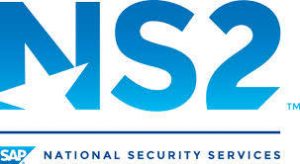The cloud is a delicate balancing act for government agencies between complying with regulations and securely adopting the technology. For organizations capable of safely making the move, the benefits far outweigh the cost.
Cloud managed services strengthen in-house operations and IT systems by services offered on a third-party operated cloud. They ease the migration by offloading agencies’ systems to the cloud without missing any compliance benchmarks. This transition quickly settles organizations on the cloud, modernizing their digital services without sacrificing security.
“The problems that our agencies are being asked to deal with today are big things,” Dan Kasun, Amazon Web Service’s Senior Manager, Worldwide Public Sector, said during a GovLoop online training Thursday. “They’re really challenging to reach, just in scale or just in geographic reach across the globe. The cloud brings that capability to agencies.”
Hunter Downey, SAP NS2’s Senior Director, said Thursday that organizations using cloud managed services rapidly achieve worldwide reach while drastically boosting their agility and speed.
“Organizations today talk in months and years,” he said. “Imagine that you can change as fast as you can imagine it, in weeks or days.”
Besides velocity, cloud managed services also save money by eliminating costs associated with maintaining and running outdated data centers. Further savings arise when agencies trade capital expenses for venture expenses instead.
“It’s pay-as-you-go where you make sure you’re not laying out investments you’re not going to use,” Kasun said. “That means that agencies can try new things, take risks and do actions that they couldn’t do before.”
Another benefit of cloud managed services is that it gives power to organizational leaders, letting them allocate their workforces’ energy and resources as needed.
“You are the quarterback,” Downey said. “You forecast the change. The key point is how organizations run and how they can run better. Your folks are no longer burdened by those operations.”
Agencies are often burdened with myriad compliance regulations, and the cloud is no exception. Falling short of federal cybersecurity rules is a serious challenge for organizations considering cloud adoption.
“Security and compliance are absolutely critical,” Kasun said. “If you’re an agency, you want to make sure you’re running on a platform that meets the security requirements you need. You want to choose the cloud provider that’s right for that.”
Different agencies have different mission needs, meaning they must choose the cloud compliance model that best fits their needs. The Defense Department (DOD), for example, may safeguard more sensitive data than other counterparts with no national security focus.
Kasun said that agencies with security concerns should choose a compliant cloud adoption model that is automated to quickly address their desires.
“It’s the easiest way to be mistake-free, risk-free in your environment,” he said of automated cloud deployment. “To adopt these innovations, it can’t be a situation where you adopt manual operations to get to the cloud. It comes with the responsibility of getting security right.”
Downey said that the true benefit of cloud managed services comes at the intersection of agility, automation, security and human expertise.
“To change, there’s some risk and cost,” he said. “Imagine the best and brightest assisting you in this transition.”







Leave a Reply
You must be logged in to post a comment.